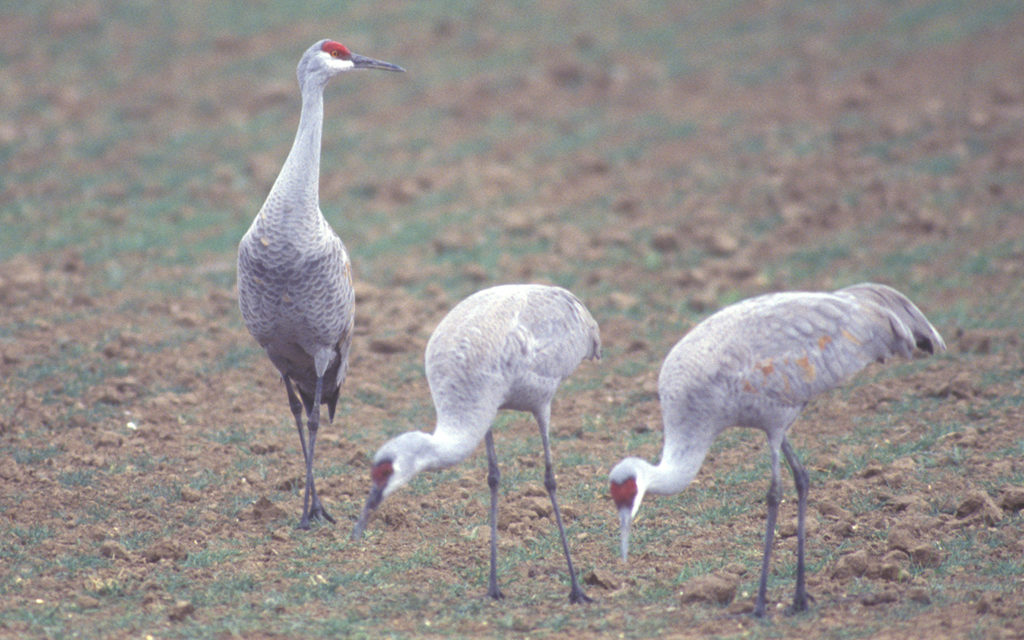AN ESTIMATED 300,000 SANDHILL CRANES winter in the Texas Panhandle and hunting for them is increasing along with the number of hunting guides. Although sandhills are also legally hunted in other areas of Texas, most are taken by Panhandle hunters. Hunting for them is illegal in East Texas and a portion of South Texas along the coast. Care should be taken to avoid confusing sandhill cranes with whooping cranes, which are stringently protected.
(Photo by John Jefferson.)
By John Jefferson
Eating lunch one Saturday afternoon in early spring, my wife stopped eating, then went to the patio door.
I asked why. “I thought I heard whitewings,” she replied. That seemed unlikely. I listened, then jumped up. “Sandhills!” I blurted as I peered through tree branches for a glimpse.
We saw about 50 as they winged by overhead. More large flocks followed. We hastened to the street to get an unobstructed view. Surprisingly, many neighbors lined the curb, looking upward. Flights of cranes were everywhere — all heading north!
We watched for several minutes, correcting a neighbor that asked what kind of geese they were. Several said they had never heard of Sandhill Cranes. I called fellow outdoor writer Russell Tinsley and asked if he had seen them. He lived about 15 miles away to the southeast – 30 minutes by car.
“If you want to hear them,” he replied, “I’ll stick the phone out the door.” As far apart as we lived, if they were still passing over his house and ours at the same time, there had to be thousands! Maybe hundreds of thousands! I hadn’t known there were that many in Texas. TPWD estimates 300,000 or more winter in the Panhandle Region; another 120,000 winter along the coast.
I have seen them there during the winter, in South Texas and twice by a large pond on our Lampasas County deer lease, a stopover site during their migration from the north to the Gulf area. Their call is said to be a series of “k’r-r-r-r-h-o-o” but when you hear a large flock, the calls all blend together in a beautiful cacophony.
Sandhills are big birds, but not quite as large as whooping cranes. If the two species are together, the size difference is obvious. Whoopers are majestic birds in all white, except for black wingtips and a red cap on their heads. Sandhills are gray, also wearing a red hat. Occasionally, whooping cranes are seen flying with sandhills.
And that can be trouble. Sandhill cranes are highly regulated, though legally hunted; there is no open season on whoopers and a whopping big fine and restitution charge for killing one. The last man in Texas to shoot one eventually violated his probation and went to federal prison.
Texas has three hunting zones for sandies. For the zone map, see page 77 in the TPW OUTDOOR ANNUAL (hunting regulations booklet). There is also a closed portion of Zone C (South Texas) starting in Victoria and including most of the coastal area all the way to Corpus due to whooping crane presence.
Zone A (West Texas) hunters harvest 77% of the cranes bagged in Texas. Zone C hunters take 19%. Zone B hunters down 4% in mid-state. Zones A and B seasons runs through Jan. 27. Bag limit is three in both. Zone C ends Jan. 20. Bag limit is two.
Are they edible? Two I shot in Zone A surely were. Some people even call them “ribeyes of the sky.” We agree.
JJ





